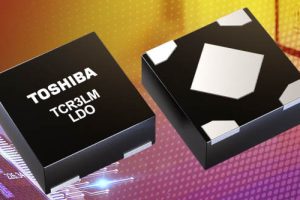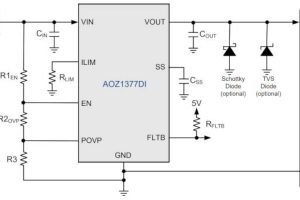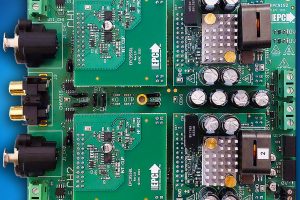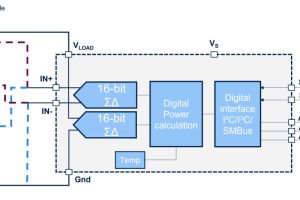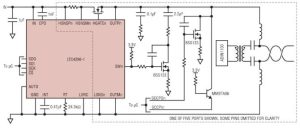
“Combined with ADIN1100 and ADIN1110 10BASE-T1L industrial Ethernet solutions, customers can reliably transfer both power and data over one kilometre”, according to the company – for example, for industrial Ethernet-APL, which is 10Mbit/s Ethernet 10BASE-T1L over fieldbus Type A screened twisted pair cable.
LTC4296-1 is the five port SPoE sender – or ‘Power Sourcing Equipment’ (PSE, above right) – designed to be IEEE 802.3cg compliant for interoperability with 802.3cg ‘Powered Devices’ (PDs, see below) in 24V or 54V systems.
Using external n-channel mosfets to handle power (a charge-pump is included), it implements high-side circuit breakers (see diagram) with fold-back current limiting for in-rush control and short circuit protection. An optional low-side circuit breaker protects the negative output against back-feed faults, and ground faults in non-isolated applications.
‘PD classification’ (using ‘serial communication classification protocol – SCCP) and MFVS (maintain full-voltage signature) are there to apply full operating voltage only when the powered device is p
resent – with pins allocated to disconnect port power snubbers during the associated assessment.
Powered device initiated sleep and wake-up are supported – the Wake-up pin supports wake-up forwarding – and telemetry, status and software control are accessed through an SPI bus.
It runs off 6 to 60V, and packaging is 7 x 7mm 48pad QFN.
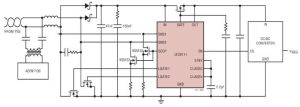
LTC9111 is the single port power receiver – or SPoE PD controller (left)
Also IEEE 802.3cg compliant, it operates over 2.3 to 60V and has low-drop-mosfet-based polarity correction (see diagram) so that it can be connected either way around.
In-built classification ensures full operating voltage is supplied the PSE (power source, above for example) once the powered device is connected. Two external n-channel mosfets are driven during classification, and another n-channel mosfet isolates the output capacitance during classification and in-rush. The operation of these mosfets is qualified by input voltage and a mandated delay.
Operation is over 2.3 to 60V, and packaging is 12pad MSOP and DFN, down to 4 x 3mm.
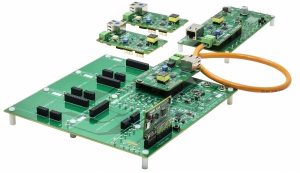 There is an associated evaluation kit (right), and the product web pages are: LTC4296-1 and LTC9111
There is an associated evaluation kit (right), and the product web pages are: LTC4296-1 and LTC9111
Find more about Ethernet-APL here
 Electronics Weekly Electronics Design & Components Tech News
Electronics Weekly Electronics Design & Components Tech News
